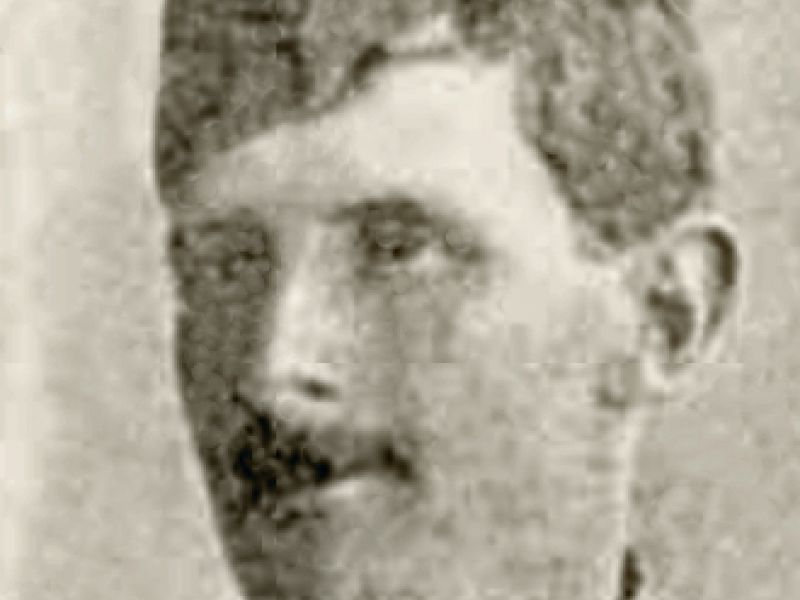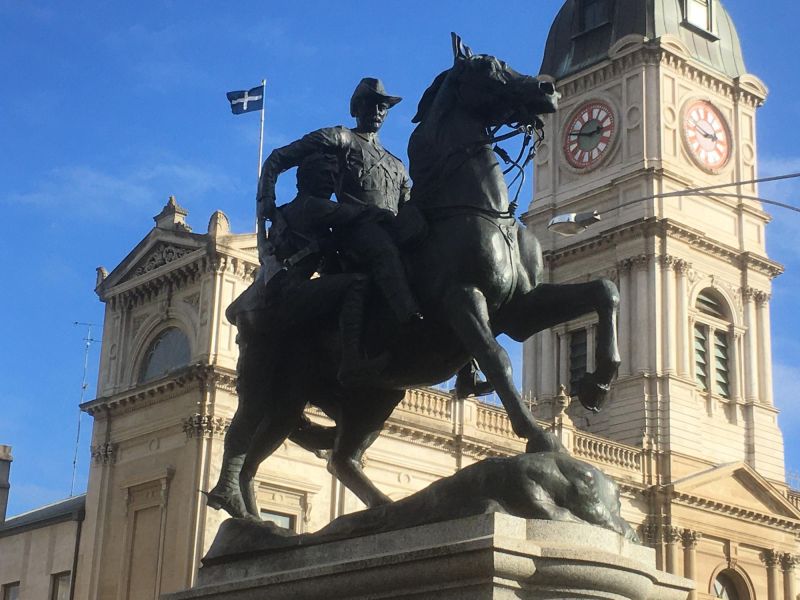Frederick Aston Ferris
Frederick Aston Ferris was the second son of Jacob Ferris of Port Albert and Helen Brown Ferris (née Nielson) of 52 Hanover Street, Windsor. He was born in 1870 in Port Albert, Victoria.
Frederick originally joined the 1st Victorian Infantry Company (Regimental number 46) with the rank of private. This contingent embarked on the S.S. Medic at Port Melbourne on 28th October, 1899. Upon arriving at Cape Town many of the contingents from Australia were formed into the 1st Australian Regiment. Over the coming months Frederick, as part of the 1st Victorian Mounted Infantry Company, participated in actions in the Cape Colony (defence of Pin Hill), south of Orange River, Colesberg, the Orange Free State and the advance to Bloemfontein. He served with this unit until it sailed back to Australia on 4th December, 1900, on the S.S. Harlech Castle.
Clearly, Frederick had not had enough of the war and, on the14th of February, 1901, he enlisted in the 2nd Scottish Horse (Regimental number 38260), being part of the Marquis of Tullibardine's Scottish Horse.
Frederick departed for South Africa aboard the S.S. Orient. The 16th of February edition of the North West Post describes the troops departure:
“The fifth contingent raised in Victoria for South Africa departed to-day by the S.S. Orient, and considerable interest was taken by the people in the event. The men came from Langwarrin, arriving at Princes Bridge at 10:30, and at about 11 o’clock they marched along Swanston, Bourke, William, Collins, and Market streets to the Queen’s Bridge, and thence to the ship at Port Melbourne. All the space at the sides of the streets and in the windows from the bridge to the post office were well occupied, but, with a good force of police and the placing of barricades recently, obtained by the city council, good order was maintained. The contingent numbers between 1000 and 1100, and 250 went direct to the ship for the Marquis of Tullibardine’s regiment.”
Frederick rose to the rank of Sergeant in the 2nd Regiment, but was seriously wounded at Gun Hill, Bakenlaagte, on the 30th of October, 1901. This action occurred when Boers attacked and crippled a British column commanded by Lieutenant Colonel G.E.Benson, who later died of wounds received in this encounter.
Lord Tullibardine’s despatch on this action indicates how savage the fighting must have been.
“The next fight was a big one at Bakenlaagte, where Colonel Benson and Major Murray were both killed. The men did magnificently, trying to save the guns; only 96 were engaged at this point, and they stuck it out until only 6 were left unhit. Their casualties were - 5 officers, 28 men killed; 4 officers, 36 men wounded; total 73 out of 96 - all the officers being hit. I don't think I have ever heard of better or more determined fighting. Although we lost the guns, the camp was saved by the delay and the men really did cover themselves with glory.”
Upon recovering he applied for a commission with the unit. Unfortunately, he became dangerously ill with peritonitis and died of enteric (typhoid) fever on the 6th of February, 1902, at Middleburg, Transvaal, South Africa. He was buried in the Old Middleburg Municipal cemetery.
For his services in South Africa, he was awarded the Queen's South Africa medal with four clasps (Cape Colony, Orange Free State, Johannesburg, and Diamond Hill) and the King's South Africa medal.
Frederick is remembered at the Ballarat Boer War Memorial in Queen Victoria Square, Ballarat, Victoria.

 Stephen Learmonth
Stephen Learmonth